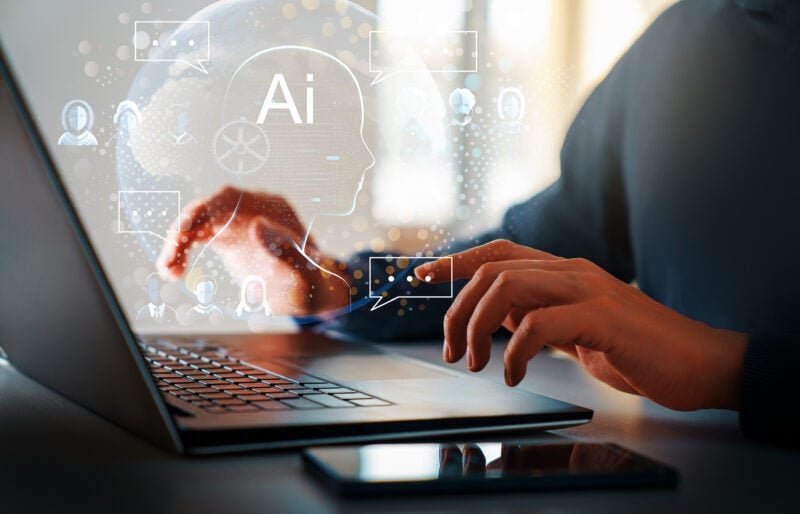“Marge,” the boss would call in the old black & white sitcoms, “Take a letter.” Then, as the scene unfolded, it soon became apparent that Marge knew more about what the letter should say than her boss.
Passe, yes. Sitcom secretaries like Marge have gone the way of homebody housewives and “Hi, honey, I’m home.” But in real life, they’re making a comeback in the form of Chat GPT and other artificial intelligence agents.
AI still can’t do your job, as this lawyer who used it to write a brief found out the hard way. But it can make you happier, smarter, and more productive. Here are some ways people are using AI now to get more done.
Watch AI Turn You into a Better Communicator and Collaborator
In the old days, Marge took a letter. Today, our AI Marge may need to reply to eight emails, schedule three meetings, create a workflow, and let multiple teams know that the boss completed three tasks. All before lunch.
Vendors are building more artificial intelligence into every communication and project management platform you may be using, from Gmail and Zoom to Slack and Teams. So everybody on your team can be on the same page with the information they need.
Get Bigger, Better Ideas with an AI Brainstorming and Research Partner
How many times have you had to wrack your brain to outline or summarize a presentation? Or prepare an agenda or itinerary? Or, if you’re a software engineer, build a routine block of code? Even a real-life Marge can’t always be up to those tasks.
But Chat GPT and other generative A.I. tools can turn a few prompts into the text you need. Or at least a first draft. But it’s still a draft. You need to check the work. And you need to make it yours. Without a human being’s knowledge, experience, and sensibilities, your AI-driven effort will seem, well, robotic.
But while you may have to check AI’s work, when it’s right, it can be spot on.
A reporter asked Chat GPT to help him pitch a hypothetical startup to a real, well-known investor. Chat GPT provided information about the investor’s background (which matched his Wikipedia page) and suggested talking points for the presentation.
When the reporter shared Chat GPT’s findings, the investor was impressed.
Get Your Bias Out of Your Decisions’ Way
In the old sitcoms, Marge served as a quaint metaphor for experience, instinct, and intuition—the only way to make decisions in a world of scarce and scattered data. While the boss’s lack of intuition—what we today call cognitive bias—was good for a chuckle, real-world mistakes were costly. And anything but funny.
Now, with so many systems gathering and aggregating data, we can make better-informed decisions. But that doesn’t necessarily mean better decisions. Insights, relationships, and patterns can be hard to find in all those spreadsheets and dashboards. And cognitive bias is every bit the issue now that it was in the days of black-and-white television.
To solve this problem, companies are training artificial intelligence to draw the conclusions we need (not necessarily the biased ones we’re looking for) from the data. But there’s still a difference between knowing the correct answer to your question and the best solution for your business.
As Harvard Business Review pointed out, AI doesn’t know your culture, vision, values, strategies, and other dynamics that drive corporate decisions. AI can objectively determine the correct inventory levels to maximize profits, but it doesn’t know that your customer experience strategy may call for higher inventory levels.
That’s still a human’s job.
Automate Away Those Boring, Tedious Tasks and the Mistakes They Cause
When we think of automation, we think of robots doing routine, repetitive tasks. Welding. Soldering. Reading bar codes and loading boxes in an Amazon warehouse.
But a lot of knowledge work can be tedious and repetitive, too. Think about the customer service rep who deciphers questions and reads back instructions from a script. Today, a generative AI chatbot can more than answer questions; it can use a tone and manner that works with the customer’s mood. And the customer doesn’t have to wait on hold.
Also, consider the security guard who spends hours in a small room looking at monitors for signs of a possible intrusion. It’s boring. Dull. But AI doesn’t get bored. AI can learn to spot anomalies and alert security professionals, so they can focus on investigating them—the part of their job that matters.
Yes, Even Human Resources Is More Effective When It’s More Robotic
If you got your job any time in the last ten years, there’s a good chance that artificial intelligence had a say in your hiring. AI has been sorting through resumes and applications since the early 2000s and, more recently, engaging with applicants through chatbots and video screenings.
Once employed, AI can answer questions and zip you through HR processes more responsive than humans. AI can also create personalized training, adapting lessons to your learning style. This leads to happier, more engaged, and more productive employees.
More recently, companies have been using AI in their diversity and inclusion initiatives. AI can monitor job descriptions, recruitment ads, and other communications to ensure they are gender-neutral and inclusive while rooting out unconscious bias in hiring and promotion decisions.
The AI Apocalypse May Never Arrive
Evil AI has a long history in science fiction, from HAL turning against its crew in 2001 a Space Odyssey to Skynet’s efforts to destroy humanity in Terminator. And, ironic as this may sound, it may underlie the cognitive bias that has industry leaders believing AI poses a risk of extinction.
But the fact is, most economists agree that AI will create more jobs than it destroys. What will the new jobs be? There’s no way to know. Twenty years ago, jobs like social media manager and cloud solutions architect didn’t exist. This paper points out that 60% percent of today’s job titles didn’t exist in 1940.
But while we’re waiting for the future to come and the world to change, we can use AI to be more efficient and productive now.
Improve Efficiency and Productivity in Your Organization with PEX
Like many companies today, we at PEX are building artificial intelligence into our product roadmap. And while we’re not ready to tip our hand just yet, we can automate many of the functions that go into tracking and reporting corporate card spending, even as we help you enforce your company’s spending rules. Click here for a demo.
Stay up to date on the latest PEX news!
Thank you, you're now subscribed!
Opinions, advice, services, or other information or content expressed or contributed here by customers, users, or others, are those of the respective author(s) or contributor(s) and do not necessarily state or reflect those of The Bancorp Bank, N.A. (“Bank”). Bank is not responsible for the accuracy of any content provided by author(s) or contributor(s).




